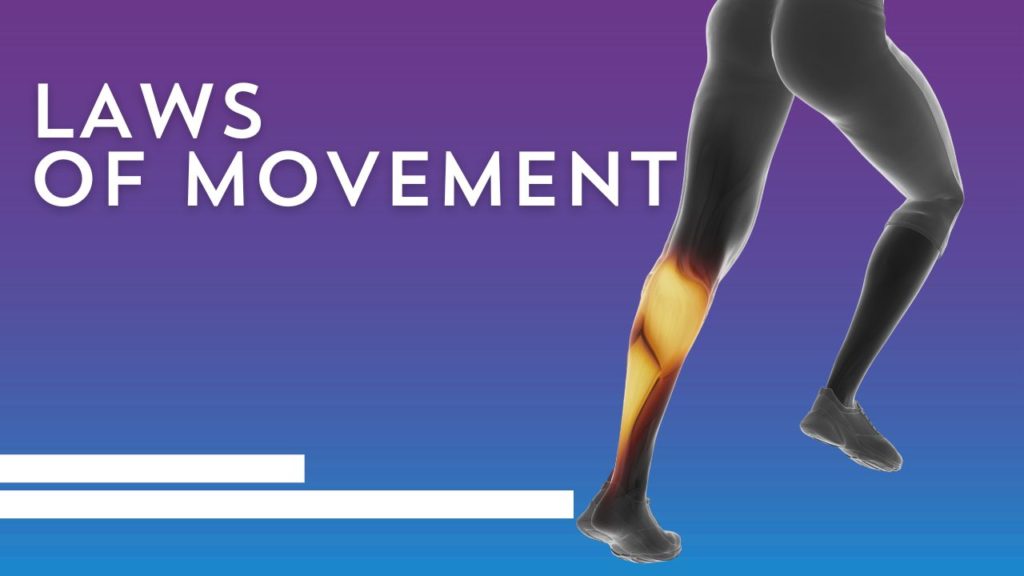
So, you’ve decided to take your health into your own hands, make a change, and start exercising. That’s fantastic! You have a concrete plan of exercises and a distinct vision of how you want your body, your life, and your health to look three, six, or twelve months from now. But how do you know if you’re performing the exercises correctly? Everyone, from absolute beginner to the most seasoned athlete, knows that the secret to longevity and safety in the gym is adherence to technique. Luckily, for all the many different exercises out there, there are five fundamental principles to follow that will ensure that you stay successful and injury-free.
The Fundamental Laws of Movement are as follows:
- Ride the Midline
- Joint Stacking
- Rooting Feet
- Bracing
- Tripod Foot
These fundamental movements are not hard rules, more like guidelines for safe and efficient movement through most exercises. While they can be broken in specific cases, it is a good idea to keep them in mind when working out.
RIDING THE MIDLINE
Riding the midline is a pithy way to remember that extreme positioning is not your friend. Generally speaking, you want to aim for middle of the road in terms of positioning when working out. Let’s start from the bottom of the body and work our way up. In reference to your foot positioning, your knees should never be caving in between the feet or pushed out to flare far beyond the outside of the foot. Knees and ankles should usually be in-line with each other. Arching or rounding the mid/low back activates one muscle while immediately rendering the other one passive. Consider this: you cannot properly use your abs if your lower back is extremely arched. Likewise, if your abs are overly engaged, you cannot use your lower back. When it comes to your wrists, your positioning can spare you a lot of pain and effort with one simple cue: keep it in a neutral position. That means no bending your wrist forward or back. Wrists tend to be cranked backward, putting the implement (dumbbell, barbell, kettlebell, etc.) out of alignment with the elbow. Not only does this result in energy leakage, but it also really hurts! For certain exercises, tucking the elbows in or flaring them out allows for inefficient movement and increases the chance for injury. Not to mention, flared out shoulders make for an extremely poor pressing position. Shoulder blades should not be moving up or down, forward or back. Avoid positioning your head up or down. It puts too much stress on the neck. Instead, try looking straight ahead or slightly up (a 30° angle at most).
JOINT STACKING
Joint stacking is exactly what it sounds like – making sure that the joints of the body are stacked one on top of another. This can be broken into two sections, upper and lower.
Upper alignment refers to keeping the implement in alignment with the wrist and elbow. Stacking your joints is a critically important cue. Take, for example, the press. In a press, power comes from the wrists and elbows being in alignment. When the wrists are bent backward, much of the power in the movement is lost. This means more effort needs to be exerted to achieve the same result. Think of it like this: less power means less efficiency, resulting in less strength and hypertrophy (muscle growth). You may be able to complete the movement in the short term, but long term, this can delay you achieving your goals or possibly result in injury as you progress to heavier weights.
The lower body is further subdivided into two-leg exercises and single-leg exercises. When we talk about two leg alignment, we refer to stacking the knee above the middle of the foot. Your knees should not veer too far out or too far in. Knees caving in can result in knee injuries, and knees flared out over the middle of the foot results in a loss of stability, which compromises the tripod foot (a concept that will be touched upon later on). A loss of stability is a loss of power.
Single-leg alignment adds one more element to the formula. Your head and knee should be stacked on top of the middle of the foot. A great example of this is with lunges: your head should be over the knee of the leg that is lunging forward, putting it directly in-line with the knee and middle of the foot.
Joint stacking is a way of preventing “energy leak”. Energy leak is a loss of power somewhere down the line of an exercise. What exactly does this mean? Essentially, it means you lose strength and hypertrophy and increase your potential for injury. When your joints are stacked on one another, the flow of energy is direct and uninterrupted.
ROOTING
We all know and understand the importance of stance when executing an exercise; and yet, our feet have a critical role that is criminally ignored. Proprioception can be boiled down to your body’s awareness of itself and its ability to sense movement, action, location, and other sensory feedback. Our feet are sensory organs that deliver a wealth of information to our brains about our environment, even through dampening factors such as shoes and socks (more on this to follow). Think of how your gait naturally changes when you walk on a sidewalk or an icy path, or even on a trampoline. Unconsciously, your body adapts to the demands of your environment, and we can use this sense to our advantage when weight training.
As footwork is the foundation of proper resistance training form, there must be conscious activation of the powerful and overlooked muscles within them. The cue to think of when rooting your feet into the floor is grabbing and twisting (and, yes, this order matters). First, “grab” the floor or inside of your shoes with your toes to stabilize the foot and ankle. The ball of your foot must stay on the ground. This movement should cause the tiny muscles in the arch of the foot to flex. Next, twist your feet and femur (upper leg bone) to the outside of the body. This has the effect of stabilizing the knee and hip via the glutes; in fact, you should feel your butt activate and tense up.
In terms of equipment, footwear will make a difference in your ability to effectively root to the ground. Most shoes are designed for fashion and actually work against the foot’s natural shape and design. Compare the foot of a toddler to your own. Children’s feet are wider, with toes spaced apart. Through years of wearing shoes, we’ve caused our feet to distort and adapt to the narrow shape of the shoes we wear all day, every day. Most shoes cause the foot to lose the sensation of being rooted to the ground. As such, some shoes are better suited to lifting than others. It is important to note that you can get away with using whatever shoe you have on hand. Footwear should never be a barrier to exercise.
If you are looking for appropriate footwear, here are some criteria you’ll want to keep in mind:
- Not squishy
Running shoes are designed to absorb impact as your foot makes contact with the ground. As a result, they are designed with a lot of foam. When you wear a heavily foamed shoe while lifting, it has a detrimental effect on stability. With a squat or a deadlift, for example, the heavier the weight, the more the foot is squished into the sole of the shoe, which absorbs the force of the movement. It’s like standing on a bosu ball – not the best for a stable lift.
- Flat
Your shoe should be as flat as possible without any heel elevation. This puts your foot in as close contact with the ground as possible, setting a good foundation for rooting. Your heel should be in-line with the rest of the foot, allowing for even weight distribution.
- Wide toe box
A wide toe box is crucial for successful and effective rooting. Most shoes force toes together, narrowing dramatically at the top of the foot. Toes need to spread in order to grab or grip properly. The human foot evolved perfectly to help us to adapt to anything our environment throws at us and, prior to years of wearing shoes, part of that evolution were toes that were able to spread and move. A wide toe box helps with foot proprioception.
- Flexibility
In this list of criteria, flexibility comes last for a reason; it’s not as important as the other three. A flexible shoe moves with your foot, ensuring that movements are efficient, and all force is effectively used.
If you’re looking for specific brands that fit the aforementioned criteria for excellent lifting shoes, here are some recommendations:
- Vivo Barefoot (this is the most expensive of the options)
- Bearfoot shoes (cheaper than Vivo. The shoes are unisex; however men’s sizing is the default. If you are looking to convert to women’s sizing, be sure to carefully check the size guide as they can differ by model)
- Lems
- Reebok NANO (a good regular shoe option)
- Converse Chuck Taylor’s (a decent regular shoe option – not squishy and flat, but narrow at the toes and inflexible)
BRACING
Bracing refers to the stabilization of the upper body (from the hips and waist up). While bracing seems like a common-sense practice, in actuality, many people have trouble doing it correctly. When properly done, bracing is similar to a pop or beer can. Cans are sturdy for a couple of reasons: their metal exterior and their internal pressure. Our bodies can adeptly emulate this concept. When our bodies aren’t braced properly, they resemble an empty, dented can – inherently easier to damage.
The question is: how do we develop pop can levels of stability?
Developing a rigid muscular sheath (stability through the trunk of the body) is key to performing any heavy lift safely. First, you’ll want to tighten your abs. When cueing for the exercise, think of it like bracing and pushing your abs out, as if preparing to take a punch. Focus on your obliques, the muscles on either side of your torso, that extend from your ribs to your hips. Once your abs are activated, arch your lower back. This movement tends to happen naturally if your abs are properly engaged. The order in which you engage your trunk is important; abs must tighten. If your lower back is overly arched, it becomes impossible for your abs to properly engage. The last aspect for proper bracing is creating internal pressure with a breath. The lungs fill with air and push out the ribs, the diaphragm moves down against the guts, which themselves push back, down, and out against the lower back and abs. This combination of rigid muscular sheath and internal pressure will protect you from injury when lifting heavy weights.
TRIPOD FOOT
The easiest way to focus on foot placement when exercising is to visualize the tripod foot. The concept boils down to the three points of contact the foot maintains with the floor at all times: the big toe, the pinky toe, and the heel. Weight distribution can and will change with the exercise, whether it is single-leg or two leg, but the points of contact are constant and will never shift. If you are properly rooting, you should find that these points of contact are easily maintained. The tripod foot helps with stability and channeling force into the floor, setting you up for more efficient and stronger lifts.
For more info, please check our Fundamental Movements video on our YouTube channel:
Part 1: https://youtu.be/S76o1NFQCZs
Part 2: https://youtu.be/8l_57TDbyRE
